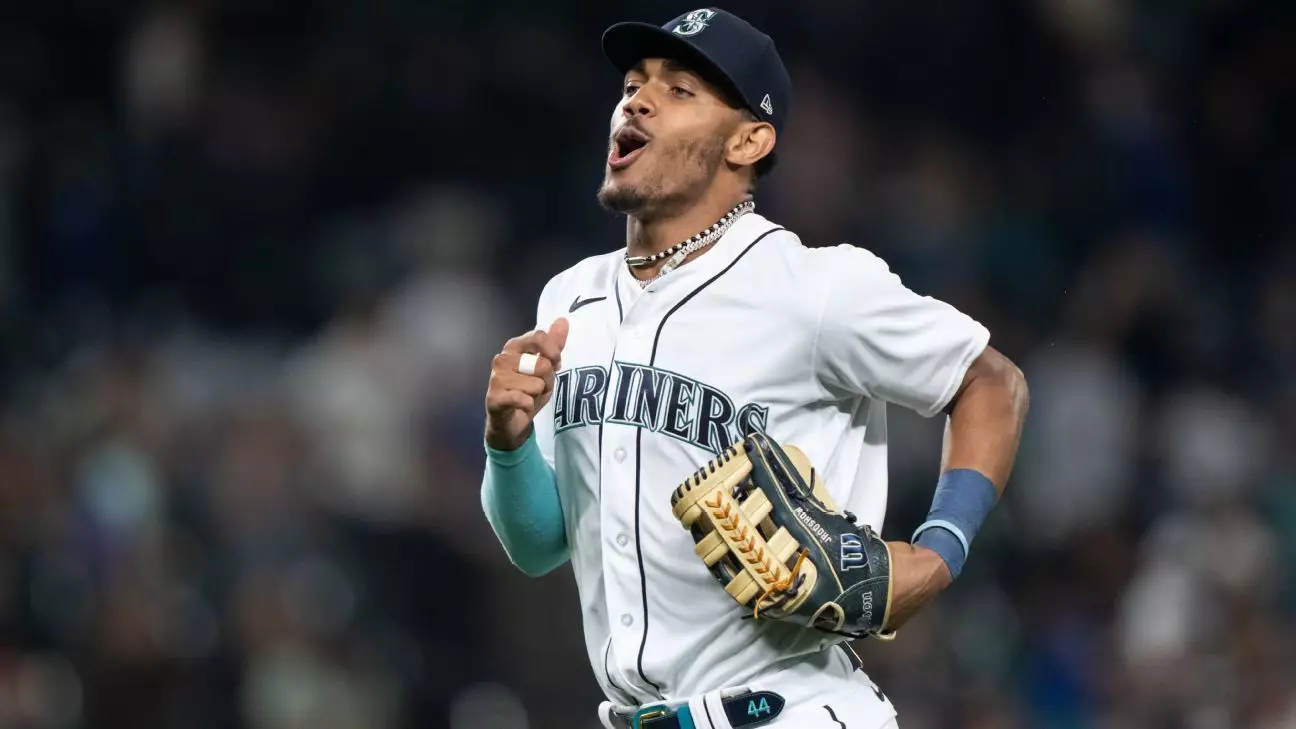In a recent announcement, it was revealed that Seattle center fielder Julio Rodriguez will receive the largest amount in the $50 million pool for pre-arbitration players. In total, Rodriguez will earn a whopping $1,865,349, bringing his two-year total to $3,416,199. This significant amount showcases the value and potential that the team sees in the young player.
Following closely behind Rodriguez is Arizona outfielder Corbin Carroll, who will receive $1,812,337. Baltimore catcher Adley Rutschman takes the third spot with a bonus of $1,798,439. These numbers reflect the exceptional performances and skills exhibited by these players on the field.
Moreover, Atlanta right-hander Spencer Strider will be rewarded with $1,692,833, while Chicago Cubs left-hander Justin Steele will take home $1,673,331. These impressive figures demonstrate the league’s commitment to recognizing and rewarding the talent and potential of young players.
Although not at the top of the list, it is worth mentioning Tampa Bay shortstop Wander Franco, who will receive a bonus of $706,761. However, Franco’s season was marred by controversy as he did not play after August 12. He was placed on the restricted list from August 14 until the end of the season due to an alleged relationship with a minor, which was under investigation by MLB and authorities in the Dominican Republic.
Despite the controversy, Franco’s bonus serves as a reminder of his talent and potential, as well as the league’s commitment to supporting young players.
The establishment of the pre-arbitration player bonus pool was a significant development in the March 2022 labor settlement between MLB and the players’ association. The primary goal of this pool is to ensure that younger players receive a fair share of compensation.
By allocating $50 million towards this pool, the league aims to provide financial support to players who have not yet accumulated enough service time for salary arbitration eligibility. This move is an encouraging step towards addressing the financial needs of young players and nurturing their development within the league.
Baltimore and Seattle have demonstrated their commitment to investing in their young cores, with seven players from each team earning significant bonuses. Baltimore’s players collectively earned $7.3 million, while Seattle’s players garnered $4.1 million.
This investment in young talent showcases the teams’ dedication to developing players and securing their future success. It also highlights the league-wide emphasis on cultivating young talent and providing them with opportunities to thrive and grow within their respective organizations.
While the pre-arbitration player bonus pool primarily benefits players without long-term contracts, it is important to note that some eligible players have secured substantial contracts.
For instance, Wander Franco had a $2 million salary this season as part of an $182 million, 11-year deal. Similarly, Julio Rodriguez earned a $4 million salary in a $209.3 million, 12-year contract, and Corbin Carroll received a $1 million salary as part of a $111 million, eight-year agreement. These contracts demonstrate the confidence the teams have in these young players’ abilities and potential.
In addition to the allocation of the bonus pool, eligible players have the opportunity to earn additional bonuses based on their achievements on the field. For instance, an eligible player will receive $2.5 million for winning either the MVP or Cy Young Award. Second- and third-place finishers in the voting will receive $1.75 million and $1.5 million, respectively.
Other achievements such as being selected to the all-MLB first team, winning Rookie of the Year, and receiving high rankings in the All-MLB teams can also earn players substantial bonuses. These additional incentives motivate players to strive for excellence and contribute to the overall competitiveness of the league.
With 101 players set to receive payments, the pre-arbitration player bonus pool is undoubtedly making a positive impact on young players’ financial situations. Notably, teams like Baltimore, Detroit, Cincinnati, Cleveland, Minnesota, Seattle, and Tampa Bay have six or more players benefiting from this pool.
As the league continues to focus on supporting and developing young talent, this bonus pool will likely play a crucial role in providing financial stability and recognition to players who are in the early stages of their careers. By nurturing and investing in the next generation of baseball stars, the league ensures the longevity and success of the sport as a whole.


Leave a Reply